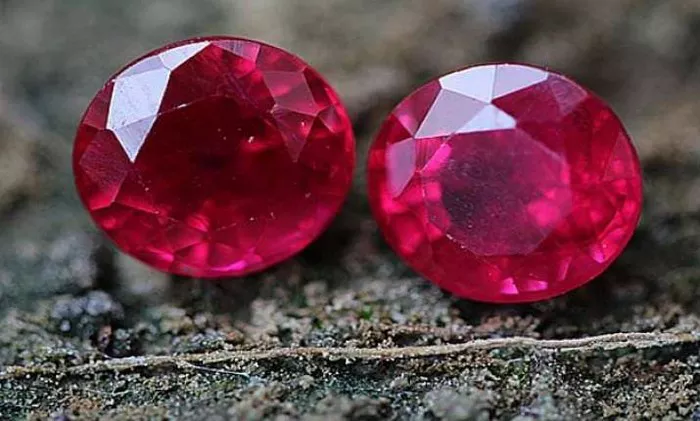Ruby, a gemstone renowned for its vibrant red hue and rarity, has captivated humanity for centuries. While acquiring natural rubies may be a luxury beyond reach for many, creating synthetic rubies at home presents an exciting opportunity to delve into the realm of gemstone synthesis. This essay aims to provide a comprehensive guide on how to make ruby at home, exploring the science behind the process, the required materials and equipment, step-by-step procedures, and safety considerations.
Understanding the Science
Before embarking on the journey of synthesizing rubies at home, it’s crucial to grasp the underlying scientific principles. Rubies belong to the corundum family of minerals, composed primarily of aluminum oxide (Al2O3) with traces of chromium responsible for its signature red coloration. Synthetic rubies are created through a process known as flame fusion or Verneuil process, developed by the French chemist Auguste Verneuil in the late 19th century.
The Verneuil process involves melting fine aluminum oxide powder with traces of chromium oxide at extremely high temperatures, typically above 2000 degrees Celsius, in a controlled environment. As the molten material cools, it crystallizes to form synthetic corundum, which, when appropriately colored by chromium, manifests as ruby.
Materials and Equipment
To undertake the synthesis of ruby at home, several materials and equipment are indispensable:
Aluminum oxide powder (Al2O3): High-purity aluminum oxide serves as the primary precursor for ruby synthesis.
Chromium oxide (Cr2O3): Trace amounts of chromium oxide impart the characteristic red color to the synthetic ruby.
Oxygen-propane torch: A high-temperature torch capable of reaching temperatures exceeding 2000 degrees Celsius is essential for melting the precursor materials.
Crucible: A heat-resistant container, typically made of ceramic or graphite, to hold the aluminum oxide and chromium oxide mixture during the fusion process.
Annealing oven: After the synthesis, an annealing oven provides a controlled environment for slowly cooling the synthetic ruby to prevent stress and ensure optimal crystal formation.
Protective gear: Safety goggles, heat-resistant gloves, and an apron are essential to protect against potential hazards during the synthesis process.
Step-by-Step Procedure
Preparation: Begin by weighing the appropriate amounts of aluminum oxide powder and chromium oxide according to the desired composition of the synthetic ruby. Typically, chromium oxide constitutes less than 1% of the total mixture.
Mixing: Thoroughly mix the aluminum oxide and chromium oxide powders to ensure uniform distribution of the chromium dopant.
Loading the Crucible: Carefully transfer the mixed powder into a crucible, ensuring it is clean and free of any contaminants.
Fusion: Ignite the oxygen-propane torch and direct the flame onto the mixture in the crucible. Gradually increase the temperature until the powder melts and forms a molten pool.
Crystal Growth: As the molten material cools, a synthetic corundum crystal begins to form at the surface of the pool. Control the cooling rate to promote the growth of a single crystal.
Annealing: Once the crystal has fully formed, transfer the crucible into an annealing oven set to an appropriate temperature. Allow the synthetic ruby to cool slowly to room temperature to minimize stress and enhance crystal quality.
Inspection: After annealing, carefully remove the synthetic ruby from the crucible and inspect it for any defects or impurities.
Safety Considerations
Synthesizing ruby at home involves working with high temperatures and potentially hazardous materials. Therefore, observing proper safety precautions is paramount to prevent accidents and ensure personal well-being:
Ventilation: Conduct the synthesis process in a well-ventilated area or under a fume hood to dissipate any fumes or gases produced during the heating process.
Protective Gear: Wear heat-resistant gloves, safety goggles, and an apron to shield against burns and chemical splashes.
Fire Safety: Keep a fire extinguisher nearby and be vigilant of fire hazards, especially when working with open flames and flammable gases.
Handling Chemicals: Exercise caution when handling aluminum oxide and chromium oxide powders to avoid inhalation or skin contact. Use appropriate measures for storage and disposal of chemicals.
Equipment Safety: Familiarize yourself with the operation of the oxygen-propane torch and other equipment to prevent accidents or malfunction.
Conclusion
In conclusion, the synthesis of ruby at home offers enthusiasts a fascinating opportunity to explore the science of gemstone synthesis firsthand. By understanding the principles behind the Verneuil process, acquiring the necessary materials and equipment, and adhering to safety protocols, individuals can embark on a rewarding journey to create their own synthetic rubies. While the process may require precision and patience, the prospect of witnessing the transformation of basic materials into a beautiful gemstone makes it a truly rewarding endeavor for aspiring gemologists and hobbyists alike.


